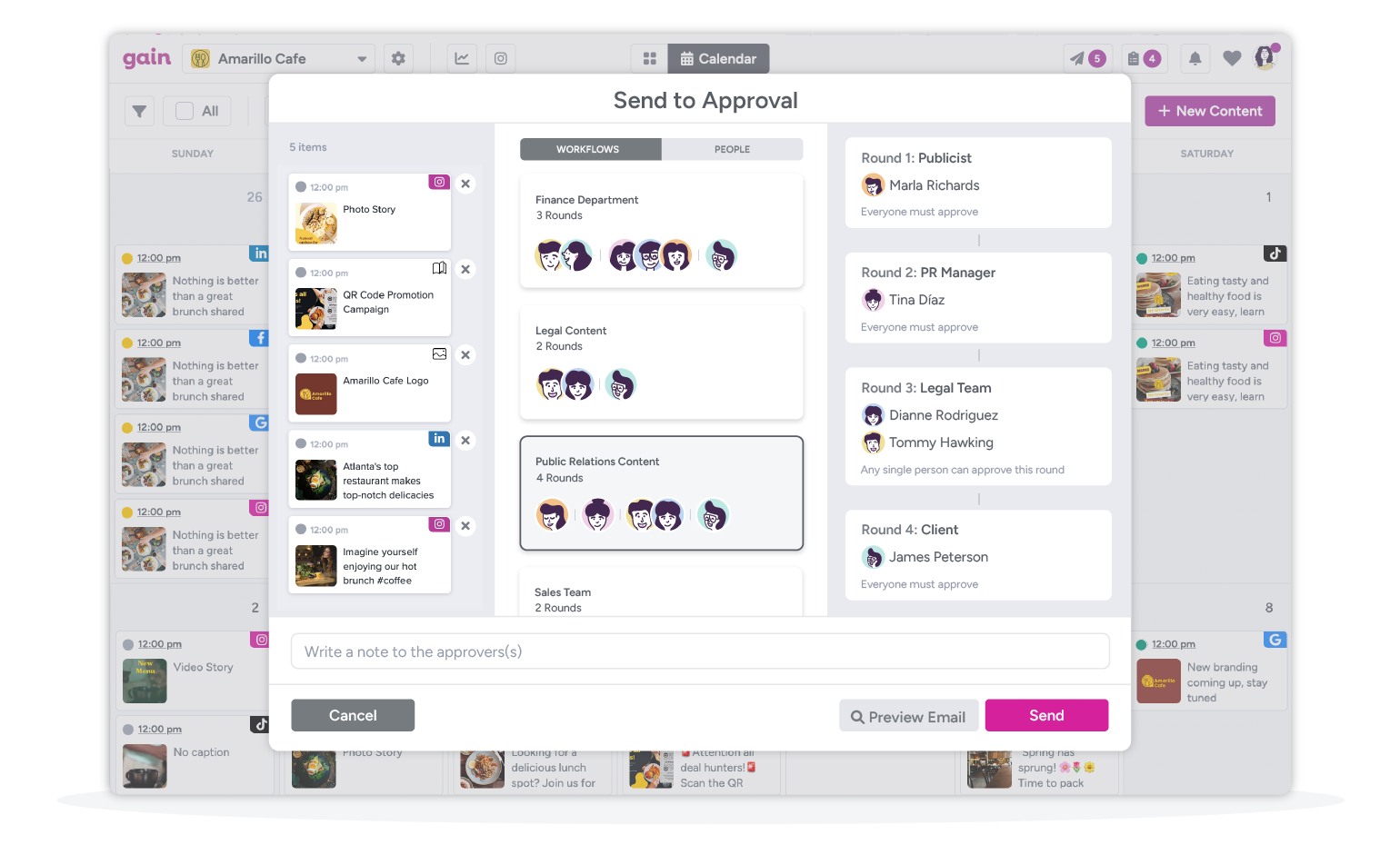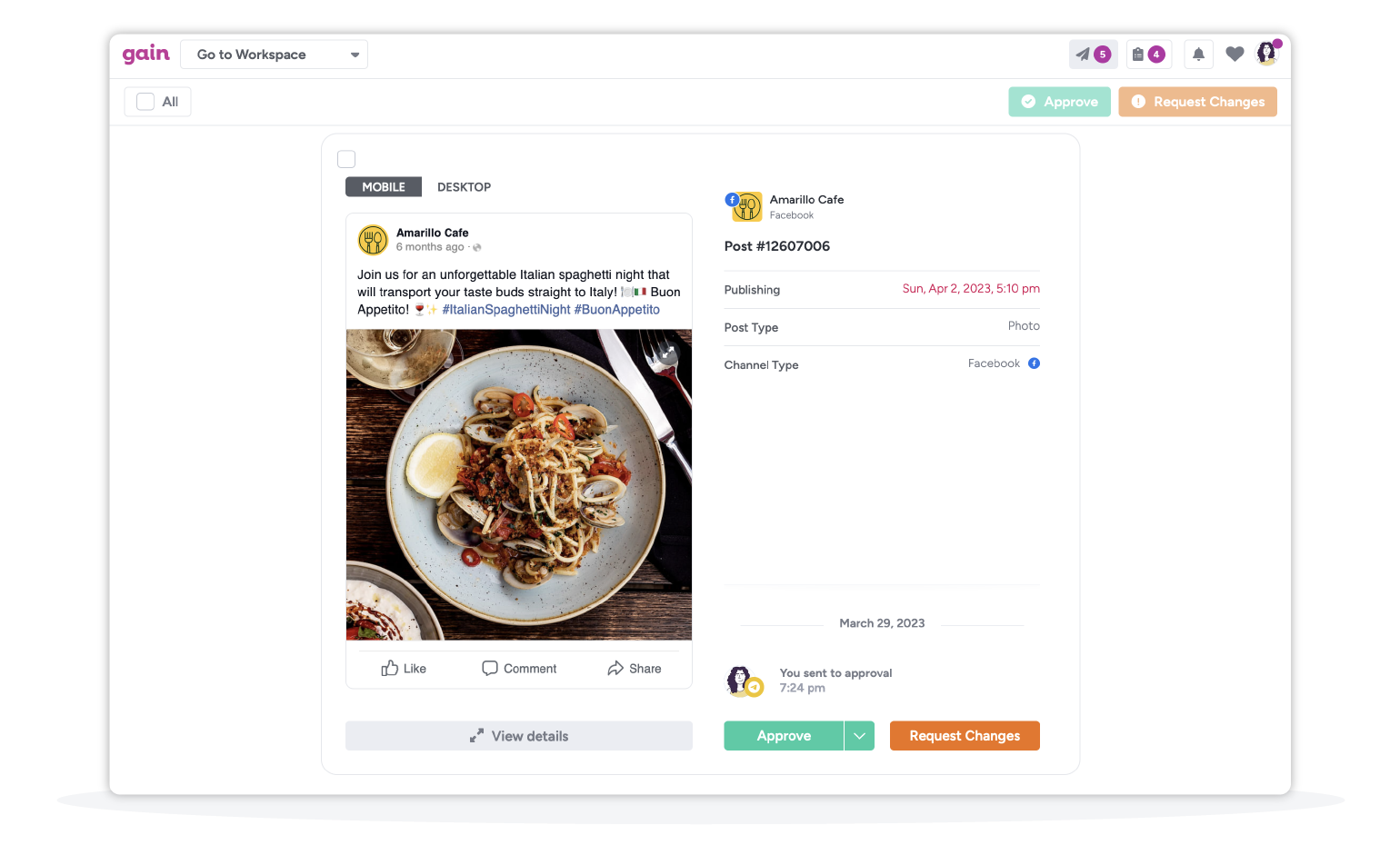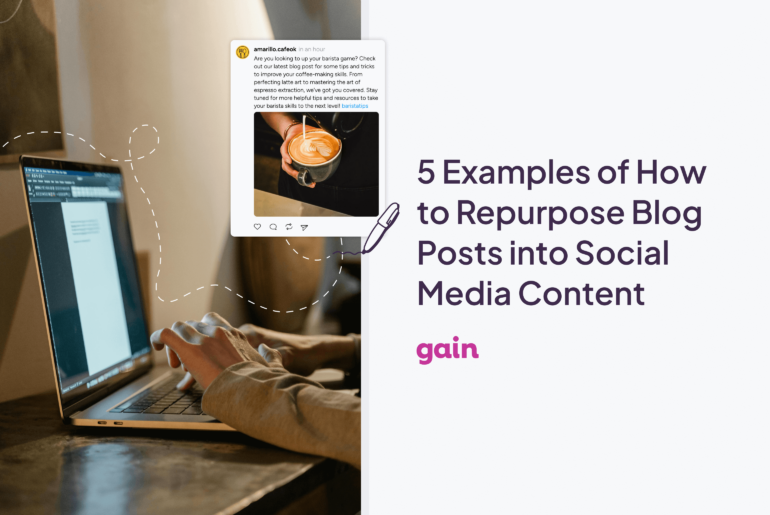Photo by Jason Goodman on Unsplash
Marketers, brand managers, and agencies are all too familiar with the intense demand to produce captivating content in a flash. Each post comes with its own hurdles: racing against time, ensuring brand consistency, and the perpetual pursuit of going viral.
The social media landscape has an ever-growing appetite for fresh content. Balancing this insatiable need with maintaining content integrity often feels like a monumental challenge.
So, what’s the key to scaling up content production without diluting your brand’s core or facing burnout? Here are 9 practical strategies.
But before we delve into them, let’s establish the importance of scaling your social media content.
Why Should You Scale Content Creation?
Scaling content creation for social media doesn’t just mean producing more content—it means producing more effective content, more efficiently. In the digital age, where everyone is vying for attention, a robust social media presence can set you apart. For businesses and agencies:
- Consistency is Key: Regular posting fosters engagement, brand recall, and loyalty.
- Reach New Audiences: Diversified content can cater to different segments, expanding reach.
- Optimize Resources: Make the most of your team’s skills and time. Efficiency is profitability.
What’s the First Step to Scaling Content Production?
Before diving headfirst into content creation, you need a roadmap. This begins with:
- Assessing Your Content Goals: Why are you creating content? Whether it’s brand awareness, lead generation, or customer engagement, your goals will determine your strategy.
- Understanding Your Audience: Who are you speaking to? Determine your audience’s preferences, pain points, and habits.
Do both things first before you think about the actual steps of scaling your social media posts.
9 Steps to Scaling Your Social Media Content Creation
1. Plan Your Content Calendar
The first step in scaling your social media content production is having a content calendar. A well-organized content calendar provides you with a clear roadmap of what to post while eliminating last-minute rushes.

A central content calendar that teammates and clients can access, like this one above from Gain, can keep everyone on the same page.
Most importantly, a content calendar facilitates content scaling by allowing for proactive planning and systematic distribution, ensuring a steady flow of diverse content across platforms.
2. Diversify Content Types
When you decide to scale your social media content, you must do so taking into account different audiences. Different audiences consume content differently.
For instance, Gen Z may gravitate towards TikTok and Instagram reels while Baby Boomers could favor long-form content on platforms like Facebook.
Catering to diverse audience preferences enhances engagement and lets you scale content strategically without wasting resources on content formats that don’t work.
3. Produce Content in Batches
Batch content production is a lifesaver in the dynamic world of social media. It offers a buffer against unforeseen delays and ensures that you always have quality content ready for release.
How does this look in practice?
Suppose you’re managing a cafe’s Instagram. One morning, you take pictures of the cozy interior, today’s special latte art, and the preparations for Friday’s live music night. This single session of content creation provides you with posts for an entire week, ensuring consistent posting without daily content pressure.
4. Repurpose Content
Those who are looking to scale content production with little to no effort should consider content recycling. Content repurposing allows you to transform a piece of content to fit another medium or platform.
The beauty of repurposing lies in its ability to multiply your content footprint without starting from scratch. Marketers can transform podcasts into YouTube shorts, infographics into LinkedIn posts, or long-form articles into a series of Instagram posts. Such strategies ensure that the core message reaches audiences across different platforms and consumption habits.
5. Leverage User-Generated Content (UGC)
UGC acts as social proof and amplifies trust. Brands like GoPro regularly feature user-generated content, turning customers into brand ambassadors. Moreover, one study discovered that millennials find user-generated content 35% more memorable than traditional content.
By promoting UGC, you’re not only increasing your content repository but also enhancing your brand’s credibility. Plus, running UGC campaigns, where you incentivize your audience for content creation around a theme or hashtag, can be a win-win, boosting both engagement and content volume.
6. Use Social Media Management Tools
Social media management tools are pivotal in scaling content production as they centralize and automate tasks, leading to greater efficiency and consistency.
For example, with our tool, Gain, agencies can handle more clients and whip up more content without stretching their resources too thin.

Gain’s standout feature is its streamlined content approval process. Think about how agencies and brands often have a ton of people in the mix—from content creators and strategists to the actual clients. Gain allows all involved parties to review, provide feedback, and approve content in one organized place.

Gain greatly reduces all that time between creating content and publishing it by automatically moving it from person to person for approval, eliminating the time-consuming back-and-forth between agency and client. And while Gain maximizes efficiency with approval automation, it doesn’t sacrifice the personal touch, allowing clients to send feedback and get quick responses from their marketing team.
Once everyone gives the thumbs up, your content’s all set to automatically go live across different social platforms. No manual posting—it’s all on autopilot, ensuring you’re always on the ball.
7. Team Training & Up-skilling
A trained team is a productive team. Regular workshops on emerging social media trends, SEO, or graphic design can significantly up the content game.
Platforms like MasterClass or LinkedIn Learning offer specialized courses, from storytelling in the digital age to harnessing augmented reality in content creation. Regular brainstorming sessions, inspired by new learnings, can further invigorate your content strategy.
8. Outsource Strategically
Ever feel like your marketing team just can’t produce content fast enough? Try teaming up with outside creatives. They bring new skills to the table, and you don’t have to hire them full-time. This way, you can quickly get more content when you need it.
On top of that, outsourcing lets your main team focus on what they do best: planning the big stuff and telling your brand’s story.
9. Analyze & Optimize
If you’re scaling up content but not seeing results, that’s a bummer.
It’s super important to keep an eye on performance. Beyond social media KPIs and metrics, delve into content sentiments, narratives, and nuances.
Tools like Pulsar or Brandwatch offer deeper content analytics, dissecting audience engagement at a granular level. By understanding not just what your audience consumes, but also why they consume it, you can craft and scale content that’s profoundly engaging and emotionally resonant.
Challenges and Pitfalls of Content Scaling
Of course, scaling your content is easier said than done.
You will naturally run into some issues until you refine your approach. Some common challenges to be aware of include:
Maintaining Quality vs. Quantity
A 2023 study by SEMrush highlighted that 91% of brands are reaping benefits from content marketing. However, simply pumping out content in large volumes doesn’t guarantee better visibility or engagement. Balancing quality with consistent content creation is no easy task.
The brands that truly shine in content creation are those that provide genuine value to their audience. Rather than offering daily tidbits, it’s often more impactful for brands to delve deeply into topics, addressing the real queries, concerns, or interests of their audience.
Adapting to Algorithm Changes
Social media platforms regularly tweak their algorithms. This is especially true for Facebook, as brands have seen a declining trend, impacting their visibility and engagement.
With these frequent changes, you might find yourself chasing the latest algorithm tweaks only to be left behind when a new update rolls out.
Understanding and staying updated with algorithm nuances is important. But, it shouldn’t be the sole driving force behind your content strategy.
Instead, the foundation should be laid on genuine engagement and delivering value to your audience. Aim to build communities, foster conversations, and ensure that content resonates with your audience. That’s the only way to make your brand foolproof from algorithm changes.
Audience Engagement & Fatigue
While frequent posting can increase visibility, there’s also the risk of audience fatigue. A study from HubSpot indicated that brands posting more than 5 times a week on Facebook started seeing a significant decline in engagement. It’s a delicate balancing act of staying top-of-mind without overwhelming your audience.
To fight audience fatigue, monitor user feedback and engagement metrics closely. If engagement drops, consider reducing post frequency or diversifying content types to keep things fresh and engaging.
Conclusion
Getting attention online is tough. But churning out lots of content isn’t always effective. After all, it’s about producing smart, resonant, and consistent posts that echo with your audience.
To start, follow these 9 steps that will help you not only amplify your content’s reach but elevate its impact. Stay authentic, stay strategic, and watch your content soar to new heights.
Try Gain free to automate your content creation and approval process, so you can manage more content, bring in more clients, and get all their awesome social media posts out there fast.






